Brother and sister follow family's dry stone walling tradition that goes back two centuries


The journey into dry stone walling started young for Cuthbert and Lydia Noble. Aged just five and two, the brother and sister demonstrated the craft on the small screen, appearing alongside their father William on an episode of children’s television show Teletubbies.
“It’s a bit like a jigsaw puzzle,” an enthusiastic Cuthbert told those watching back in 1997, as his family were shown repairing a hole in a wall. “The pieces have to fit together. We fill in all the little spaces around the wall to make it strong.”
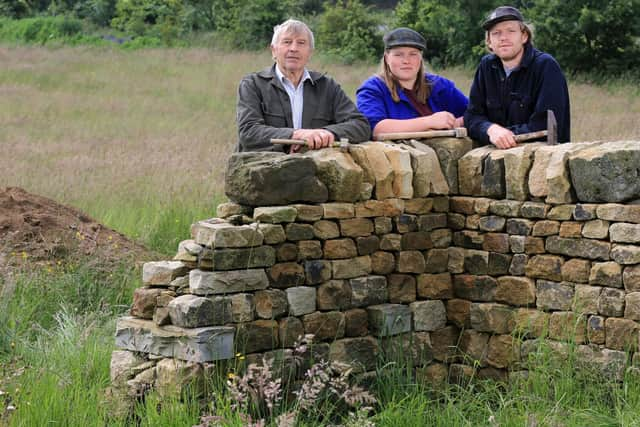

Advertisement
Hide AdAdvertisement
Hide AdThe pair have come a long way in the two decades that have since passed. Following in the footsteps of their ancestors, they now make up Noble Stonework, a fifth-generation dry stone wallers and stonemasons that is based in West Yorkshire.
In recent months, they have both attained their Master Craftsman qualifications with Britain’s Dry Stone Walling Association (DSWA), receiving the highest qualification available to wallers. “It’s a very difficult thing to do,” says father William, who also has the accolade. “There’s not many of us at that level.”
In fact, he says, the family, from Shepley, are now the most highly qualified of all in the trade. “We have now got three master craftsmen in the family – there’s never even been two in one family before so it is quite special.”
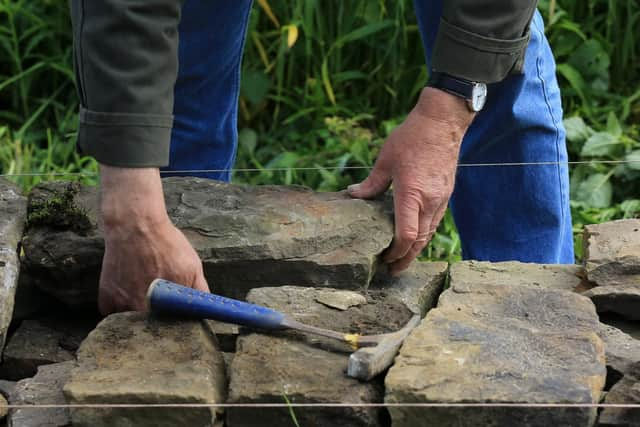

The family’s connection to the stone industry can be traced back nearly 200 years to William’s great-grandfather of the same name. He had his own quarry in South Yorkshire, where he worked as a builder and stonemason, as well as owning farmland in Shepley, which included dry stone walls that he would maintain and repair.
Advertisement
Hide AdAdvertisement
Hide AdHis son, William’s grandfather, Matthew, also worked as a stonemason and his family were involved in the construction of Shepley village school. Matthew also ran a farm down the road from where William was raised, and where, as a boy, the now 75-year-old was introduced to walling by his relatives, including his father Arthur, who was also a builder.
When William left school, he took up farming locally, covering everything from milking to tractor work. “Walling was part of the job and I just took to it then,” he says. “I worked on one fairly big farm and one summer I was walling more or less every day between milking cows.”
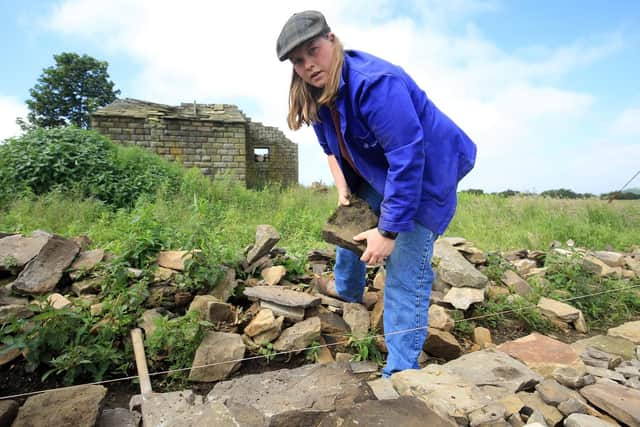

William, who now has 11 acres of land that were once part of his grandfather’s farm, later got a job in the test department of David Brown tractors, but left there, aged 28, to set up on his own as a builder and waller.
Though working as a professional, it wasn’t until he was in his 40s that he got involved in the DSWA and took his master craftsman certificate – and he is thrilled to see his children now following his lead.
Advertisement
Hide AdAdvertisement
Hide Ad“They both saw me working away when they were young and they’d seen me up in the fields. I’m very pleased they’re doing something that is continuing with the family tradition.”
In Britain, dry stone walling dates back at least three and a half millennia, with some of the earliest structures found in the far north of Scotland and the Orkney Isles. According to the DSWA, the earliest field walls were built of stones cleared from adjacent land so that it could be used to enclose stock or cultivate crops.
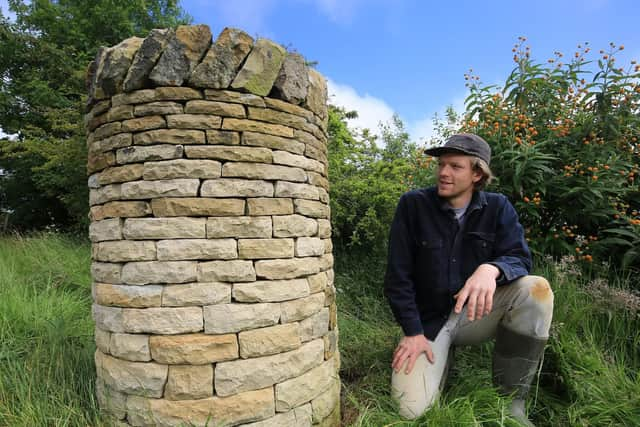

The quarrying of rocks for walls came later, but is still an ancient tradition. Many of the country’s walls were built during the period of agricultural enclosure between 1650 and 1850, when open land was divided into individually-owned holdings.
William describes the period as a “heyday” for dry stone walling, though he is quick to point out that those building them did not get paid very well. “After that, there wasn’t much done,” he says. “The walls were all in place, the land was enclosed and all it was then was just enclosing when a piece of wall fell down. The farmers used to just do that themselves.”
Advertisement
Hide AdAdvertisement
Hide AdIt is why, he says, there was a lull in walling work for much of the 20th century, and, given the repair costs involved in restoration for farmers, many structures started to deteriorate.
“It’s improved since then and there’s people coming into walling now to take it up for a job. It is hard in a sense but a lot of the stones aren’t big – some are quite manageable to be lifted by more or less anybody so it is a case of aptitude. Some people just have a talent for it.”
Those in the industry say there has been a resurgence and today there is a wider field of work on a professional level. While the walls remain a recognisable feature dividing fields in rural areas including the Yorkshire Dales countryside, they are also being used to mark property boundaries, in environmental projects and as features in gardens and landscapes, thanks to the popularity of horticultural television programmes and events such as the Chelsea Flower Show.
“There’s a lot of people interested,” says William. “And I think that’s because a lot of rural things and stuff to do with the environment, people are keen on.”
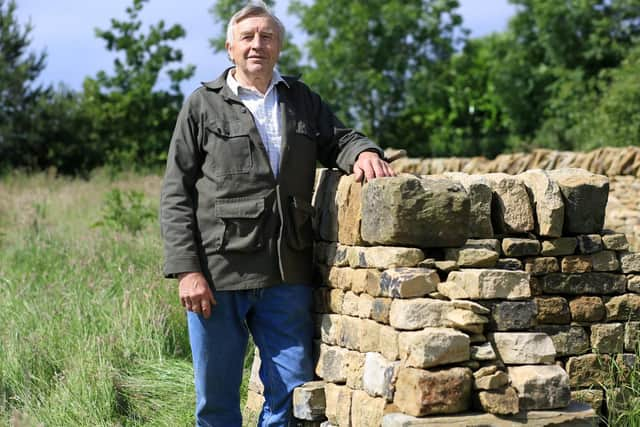

Advertisement
Hide AdAdvertisement
Hide AdThe environmental benefits of walling, including the provision of habitats for wildlife and the use of locally sourced materials, are referenced on the website of the DSWA, which is dedicated to preserving walling skills and protecting the country’s rich dry stone wall heritage.
The aim of many in the field is to promote to younger people, in particular, the benefits and pleasures to be had from working in walling. “Walling is thriving more than it has been in the last 50 odd years,” says 24-year-old Lydia, who joined the industry straight from school eight years ago.
“A lot of young people seem to be getting into it. I think things like Facebook and Instagram have helped... Everyone’s pushing the standards because they’re trying to work better as they are seeing what other people are doing and getting to know other wallers through social media.”
Both she and her brother, are part of a newly-formed young persons group within the DSWA. “It’s a good job – physically you are using your body and there’s a lot of problem-solving involved as well,” says 27-year-old Cuthbert. He has been working in the trade full-time for about five years, after studying for an art degree in London.
Advertisement
Hide AdAdvertisement
Hide Ad“It’s an aspect of life that a lot of people never get the chance to see and you get to meet a load of characters in the stone industry. It offers a different way of life and way of making money. There’s been a tendency towards office jobs and especially now, there’s a lot that are computer-based. It’s not a very healthy way to spend your day.
“With walling, you are moving around, you are getting some form of exercise. It keeps you fit and it keeps you interested – there’s always something different.”
Walling has taken his family to places even they did not expect. Between them, they have done projects for the Chelsea Flower Show, worked for sculptor Andy Goldsworthy, and got involved in builds in Japan, San Francisco, Sweden, Canada, France and even on a mountain in Switzerland.
“It’s led to all sorts of things that I never imagined when I first started repairing walls on farms,” William reflects. “I never thought it would lead to what it has done.”
Advertisement
Hide AdAdvertisement
Hide AdHe says there aren’t many places where the skill continues. “Every country in the world has got some sort of dry stone walling somewhere but the skill has been lost so they’ve all really, in one way or another, come back to Britain to find out how to do it again. It’s a thing to be proud of here.”